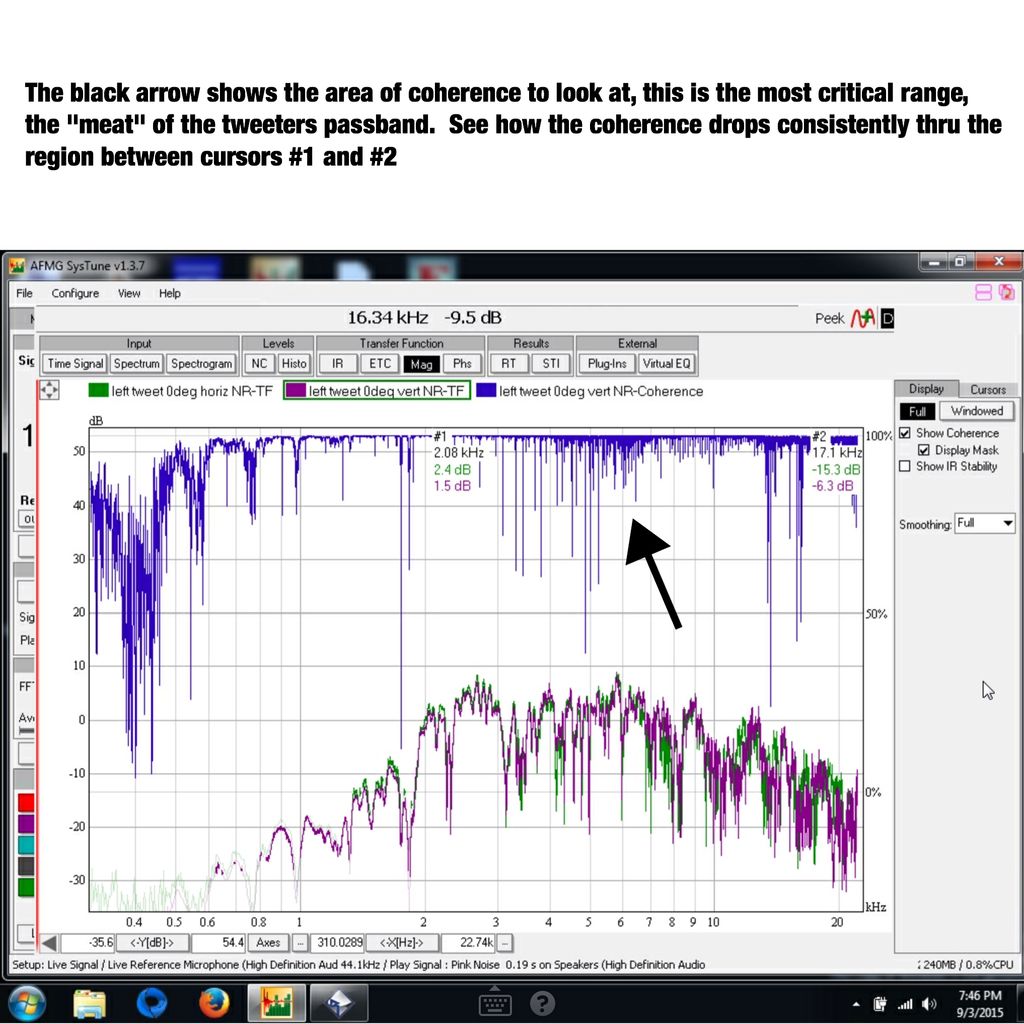How are you measuring phase coherence with only one speaker jplaying? Not sure I'm clear on what you're measuring.
Its not "phase" coherence.
It's simply called "coherence"
Meyer Sound SIM
Rational Acoustics SMAART
AFMG EASERA
AFMG SysTune
All these measurement systems and more can measure coherence.
From the SysTune manual:
"........The coherency function is a well-defined entity in system theory, for the mathematical expression we refer you to standard text books. Essentially, it measures the correlation between signal and reference, output and input, respectively, of the system under test. This results in a frequency-dependent function with values between 100% and 0%, which represents the level of linearity and constancy of the measured system. There are some fundamental properties worth mentioning with respect to the software implementation........First, its evaluation relies on the set of available FFT blocks. Coherency is always 100% if there is only a single FFT block included with the measurement, which is 1 average. In SysTune for this situation, you may only see values different from 100% if the reference signal is not defined for a particular frequency. For these frequencies the coherency will be 0%.
Second, coherency accumulates variation and occurrences of nonlinearity over time. That means, the more averages you include in the measurement the lower will be the coherency, as every additional second of measuring time will always pick up a little bit of noise.
In practice, a coherency value of 100% or close to that will be difficult to achieve. For a small number of averages, normally a coherency of 50% is a good value, for a large number of averages about 25% will usually be sufficient.
Because coherence is a good measure for the validity of the data acquired, it obviously makes sense to use it as a processing filter for capturing valid data only. This function was implemented as part of the patent-pending SSA filter explained in chapter 5.5 and it is named the coherence filter........."
There are LOTS of acoustic analysis techniques out there that 99% of the car audio world doesn't realize simply because they don't take the time to learn.








